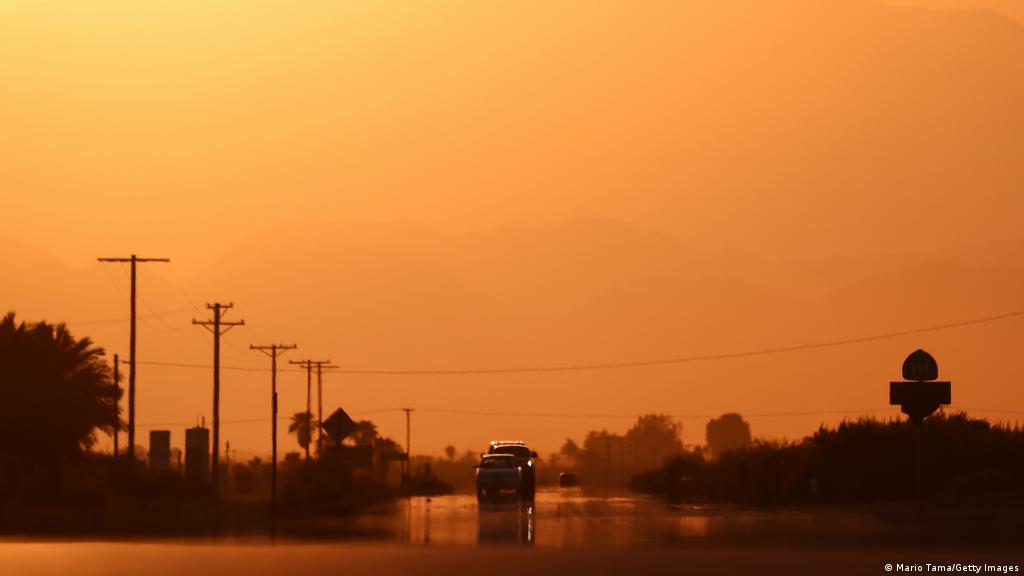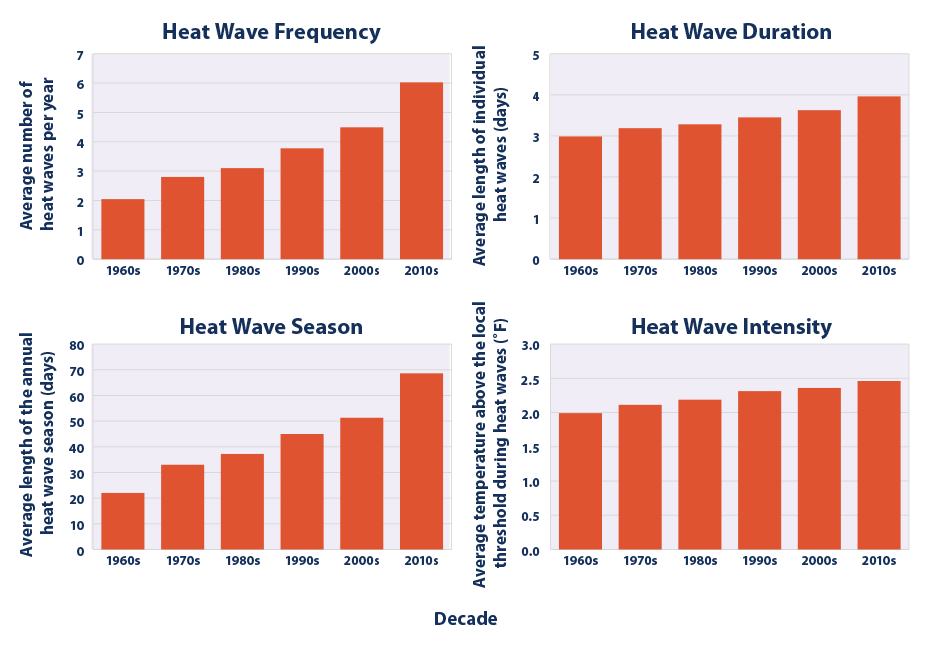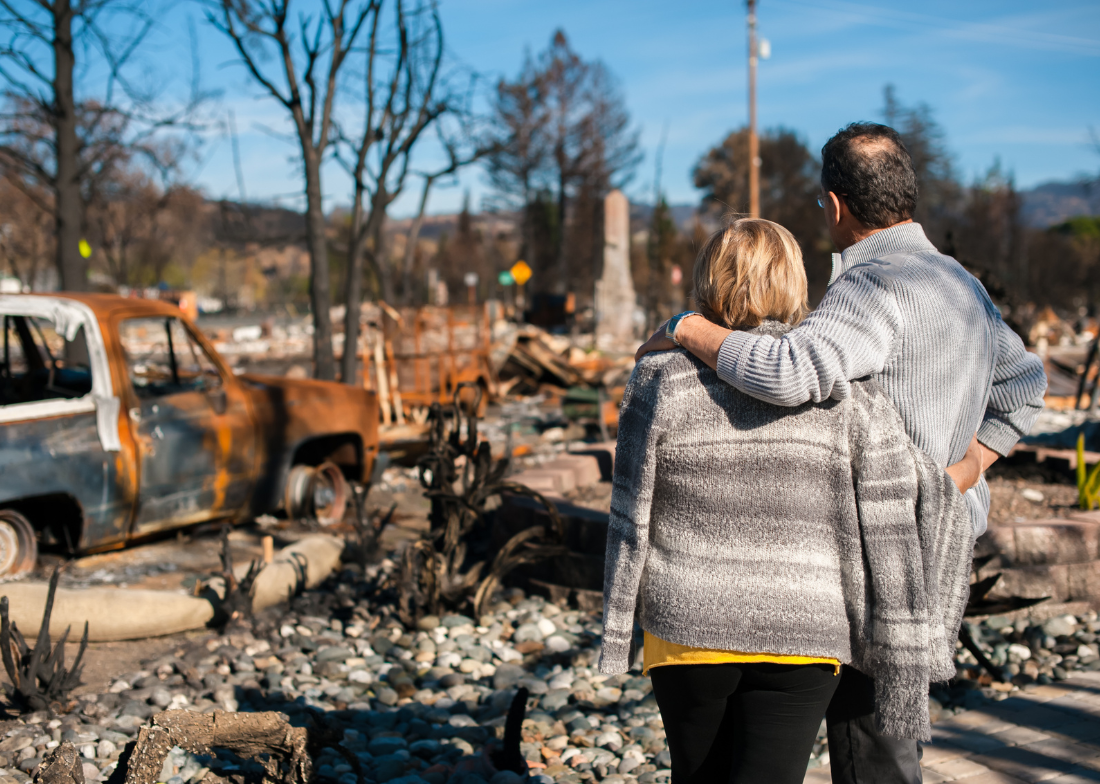Heat Waves and Climate Change 101
Victoria Whalen, ACE Fellow
|October 14, 2021

The scene of the oil spill in the waters around Mauritius after Japanese bulk carrier, MV Wakashio, ran aground on 25 July 2020. Greenpeace
It’s getting hot in here and it’s only going to get hotter! Each year heat waves ravish across the globe and significantly alter everyone’s way of life. Heat waves are becoming more frequent, are lasting longer, and are becoming more dangerous. Climate change and an upward trend of global warming are putting our planet close to the brink of a meltdown.
What are Heat Waves?
A heat wave is an extreme weather phenomenon where there is unusually hot weather that lasts more than two days. To be considered a heat wave, the outside temperature must be hotter than the historical average temperature of the area.
When we burn fossil fuels, carbon dioxide is released into our atmosphere. Similar to how a blanket traps heat, CO2 molecules are unable to escape, thus they make Earth’s temperature rise.
The effects of extreme heat are often more dangerous and prevalent in urban areas. Urban heat islands represent the significant difference between temperature in rural areas and temperatures in cities. The urban landscape typically has increased blacktops, less plant life, and more people. All of these are factors that can trap heat in. Studies have shown that approximately 70% of the world population will live in cities by 2050, and more people will be exposed to extreme heat.
Timeline

Over the years and all across the globe, heat waves and extreme temperature events have been increasing in their length and magnitude. There is an upward trend that shows more areas around the world are warming rather than cooling. Last year, 2020 tied with 2016 as the hottest year on record since 1880, and scientists have projected it’ll only get hotter.
The frequency of which heat waves occur has increased from an average of two per year during the 1960’s, to on average six per year. The temperature itself has also increased. Since 2010, the average heat wave has been 2.5 degrees Fahrenheit above the historical average temperature of the area.
Heat Wave Threats
Human Health
Extreme heat is detrimental to our bodies. While reactions to heat can differ depending on the person, negative health effects can appear without warning and could result in serious injury or death. One of the most prevalent heat related ailments is heat stroke. This is a condition that occurs when the body is unable to control its temperature. Lack of temperature control can lead to multiple internal systems shutting down and could result in death.
Heat-related mortality is increased in high population areas such as cities due to factors of inequality, limited resources to health care, increased levels of pollution, and less green spaces. Places like St. Louis, Chicago, and New York City have seen significant increases in death rates during heat waves.
Environment
While some places are built to withstand extreme heat, most environments are changing drastically. Heat waves can cause water sources to diminish, introduce stress on plant life that stunts growth, entirely dry out a landscape, accelerate glacier ice melting, and lead to wildfires that destroy everything in its path.
Heat waves can also turn carbon-sink landscapes into carbon-sources. For example, the heat wave in 2003 caused Europe to experience severe tree damage and leaf fall,releasing more carbon dioxide into the atmosphere than was absorbed. In 2010, Russia was the hottest it had been in 130 years. This led to 15 million hectares of forest, vegetation, and peat land to be burnt and heavily affected areas without fire-tolerant species.
Agriculture
All around the world, agriculture has been affected by climate change and increased temperatures. Researchers at University of Colorado Boulder have projected that heat waves could cause as much as 10 times more crop damage than what is projected now. All crops, whether they thrive in the day or night, are being affected. Wildfires and droughts have led crops to underperform which has increased the global hunger pandemic. Animals are also at risk. Cattle that haven’t been able to keep cool are experiencing a lack of milk production, stunted growth, and reduced conception rates.
Agricultural workers are also being affected. The United States has no federal policies in place that protect farm workers from extreme heat. Out of 50 states, California and Minnesota are the only two states that have heat protection policies in place for workers. A study was done at the University of Washington in 2020 that showed an increase from 21 days to 62 days (by the end of the century) of unsafe temperature conditions for farm workers.
Energy
As the days get hotter, the need for energy efficiency increases. Higher temperatures lead to an increased demand in cooling, which means an increased price in the energy bill. Not only that, increased air temperatures lower the amount of electrical currents in power lines which decrease the energy efficiency in transmission lines. Not having a reliable power source during a heat wave is extremely dangerous and could lead to more illnesses and death.
Power plants are also affected by the extreme heat. As the air warms up rivers and lakes, they begin to lose their capacity to absorb waste heat from power plants. This will lower the efficiency in power production. If water temperatures at power plants aren’t properly regulated, then it could lead to major meltdowns and compliance issues with environmental regulations.
How to Stay Cool
As heat waves continue to get hotter and last longer, we must prepare ourselves and our planet for the best way to combat the heat. Below are some tips and tricks to keep our bodies and our environment from overheating.
Tips for our bodies:
- Stay hydrated!
- Avoid strenuous labor/exercise outdoors during a heat wave
- Locate access to public drinking fountains, swimming pools or watering holes, spray pads, etc.
Tips for our planet:
- Reduce greenhouse gas emissions!
- Create urban forests to help mitigate urban heat islands
- Examples include street trees, wooded areas, or places like Central Park in NYC
- Add plant cover on roofs, aka green roofs. This can reduce indoor temperatures and improve energy efficiency in buildings.
- Update building codes and create better policies to increase energy efficiency
- Examples include using renewable energy or distributed generation
Want to learn more?
Want to read more? Check out the ACE Blog.
Join our Youth Action Network
More Blog Posts
Driving India towards self sufficiency and freedom from oil
India can shield itself from oil-price shocks and global pressure over Russian barrels by leaning harder into two strengths it …
Read More
Unnatural, Not Unprecedented
For two weeks, residents of Southern California endured a waking nightmare. Parents raced against time – hurrying down the driveway …
Read MoreCrafting a Vision for the Future: My Experience at LCOY USA 2024
Dry and sunny Tempe, Arizona where temperatures have been over 100 F for 113 consecutive days, delegates gathered to attend …
Read More